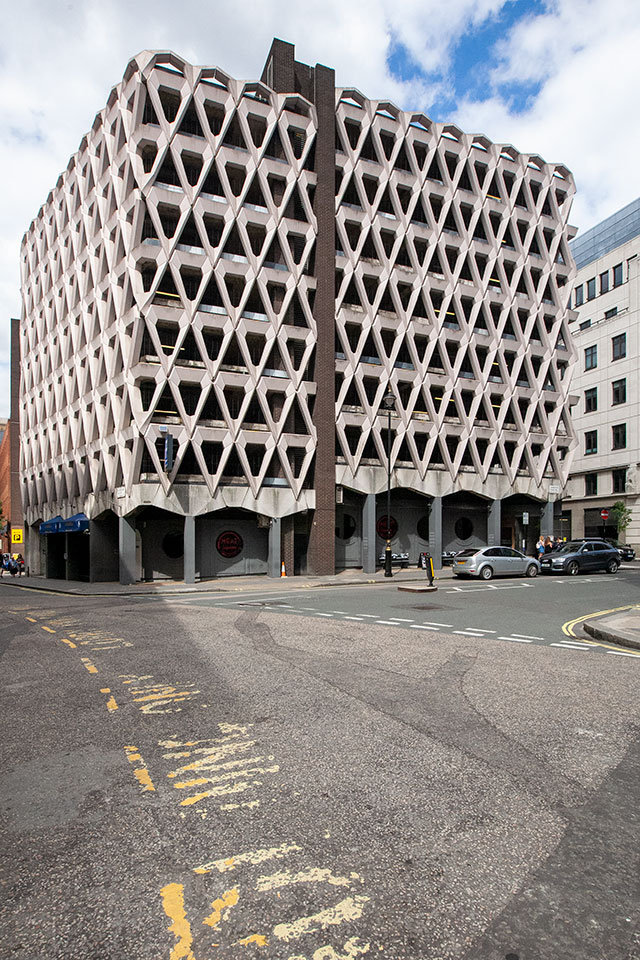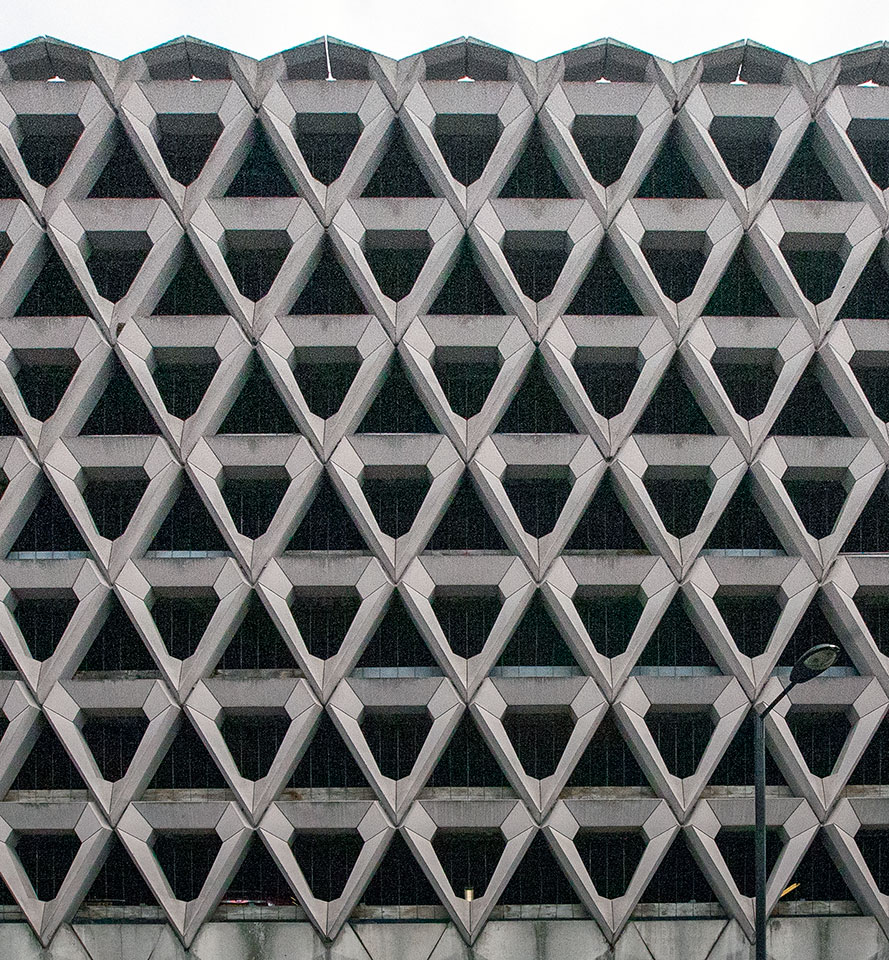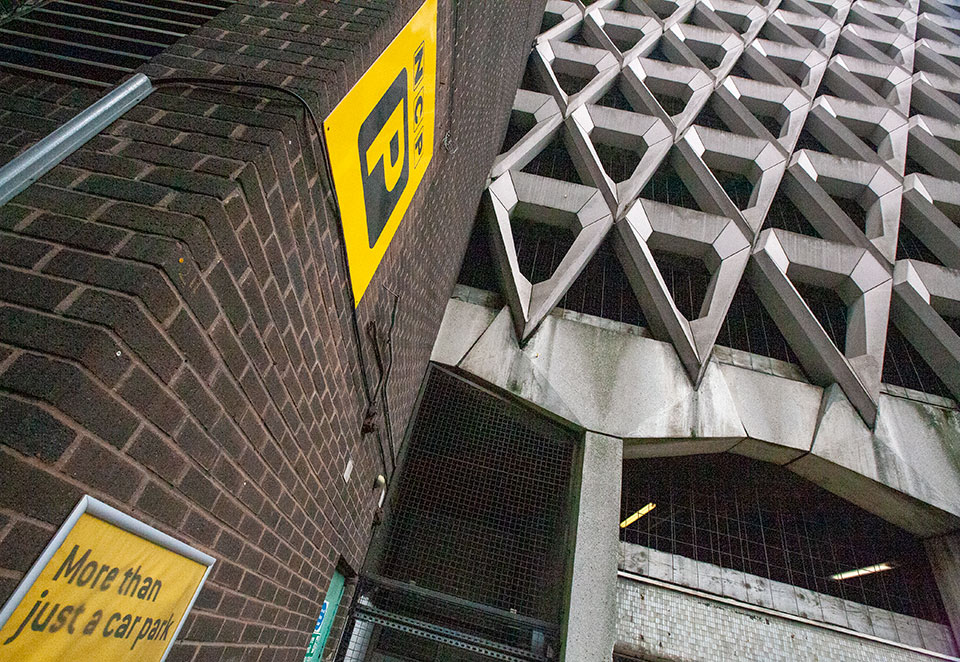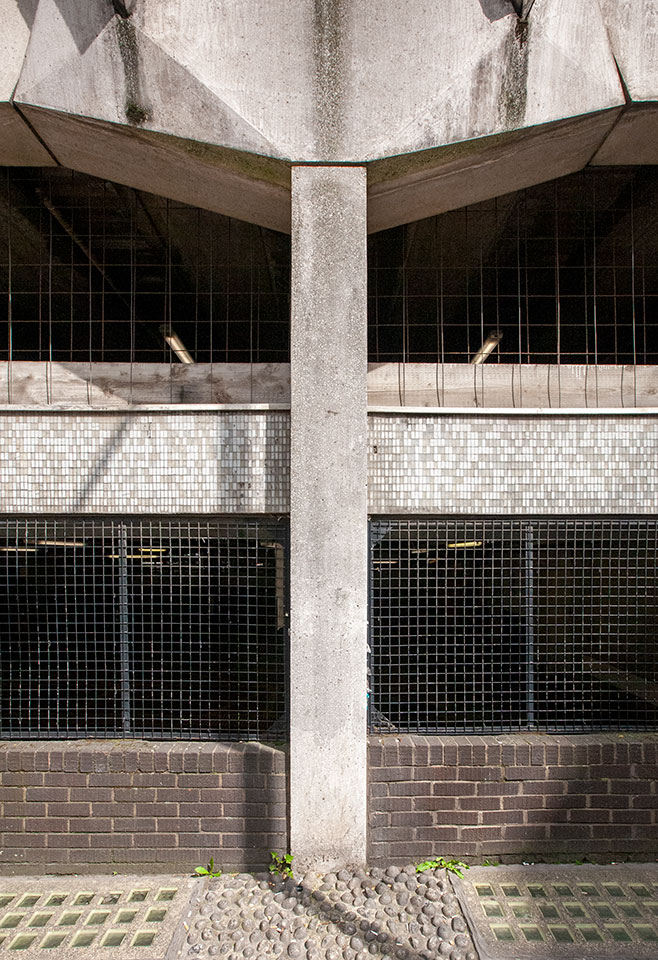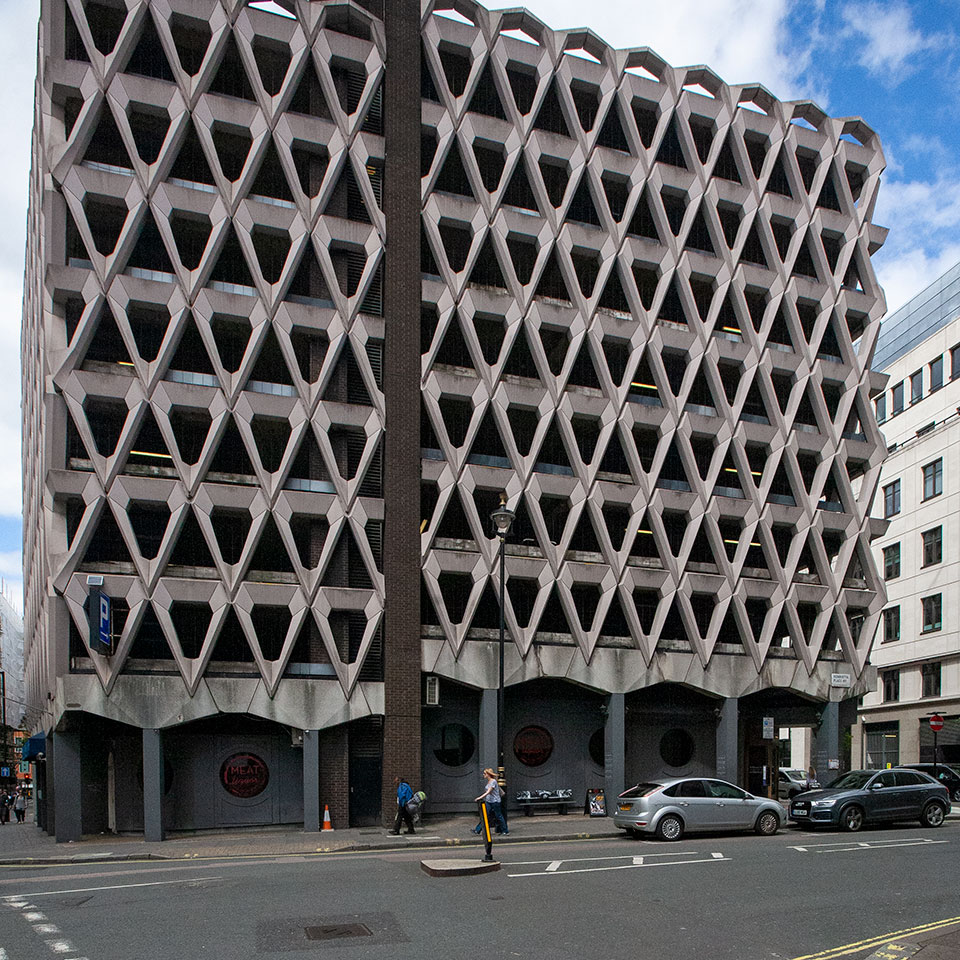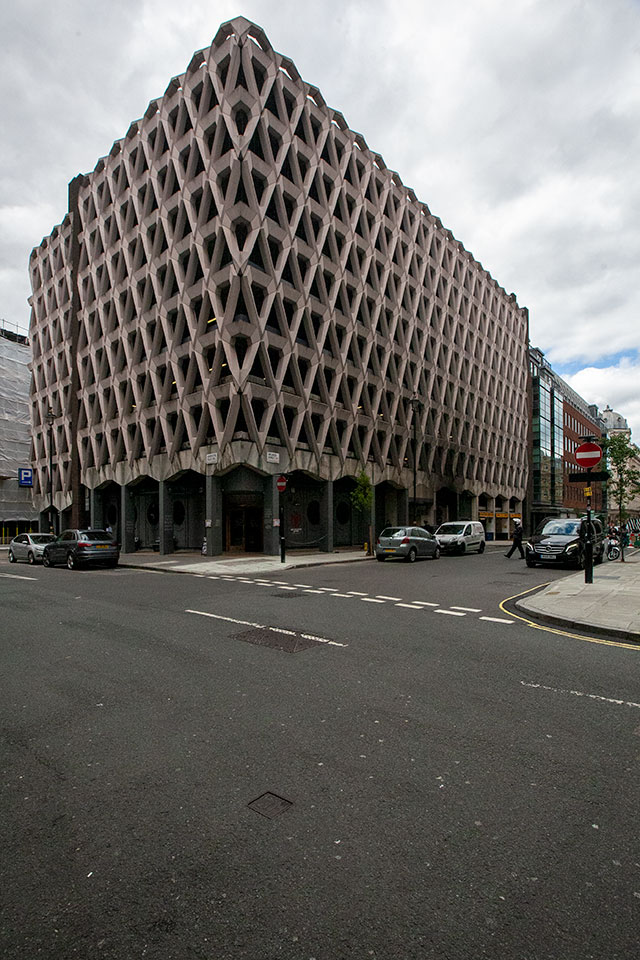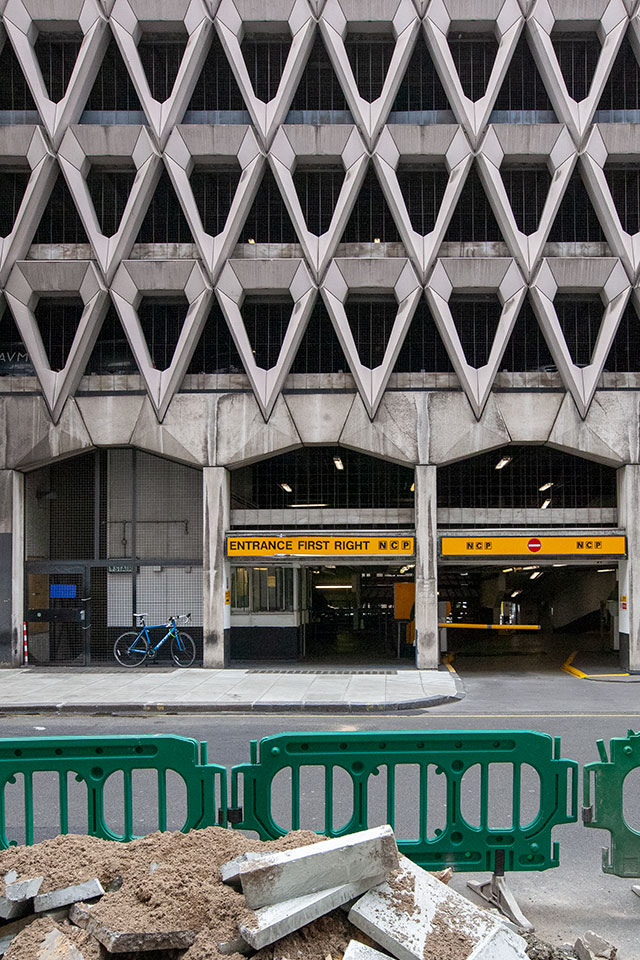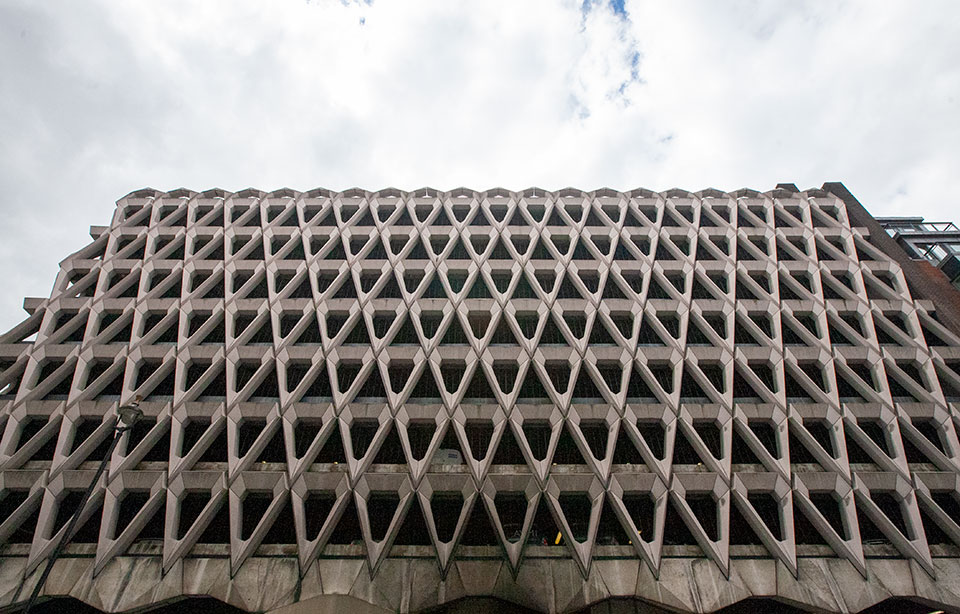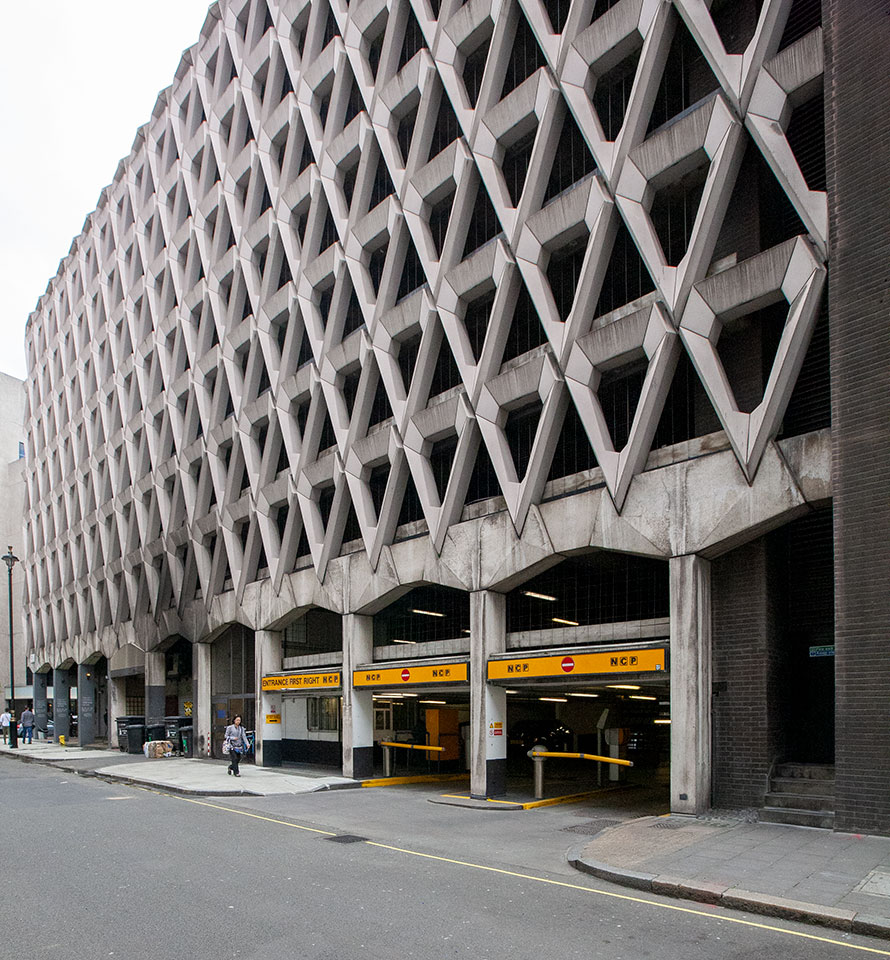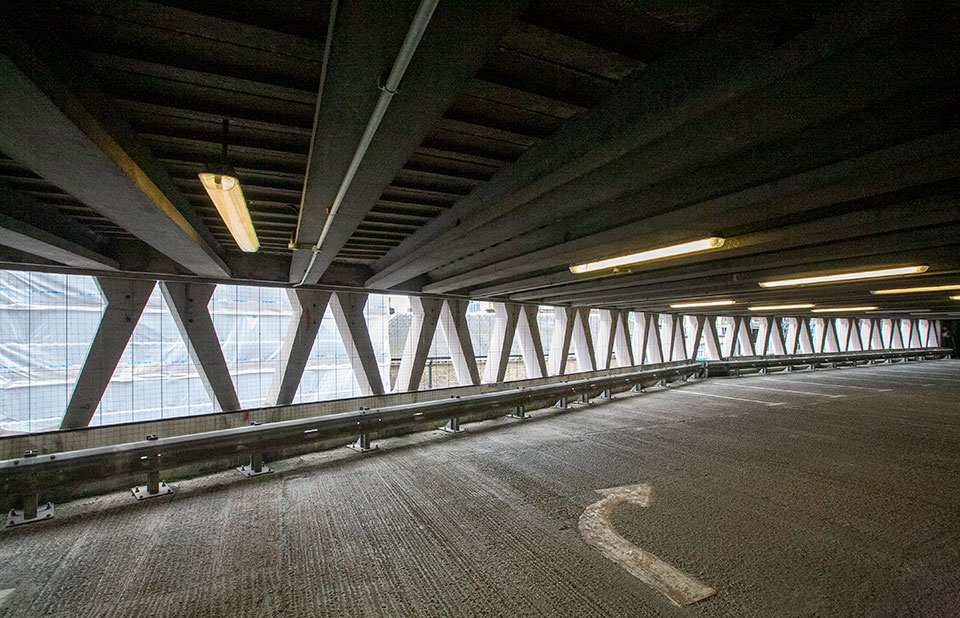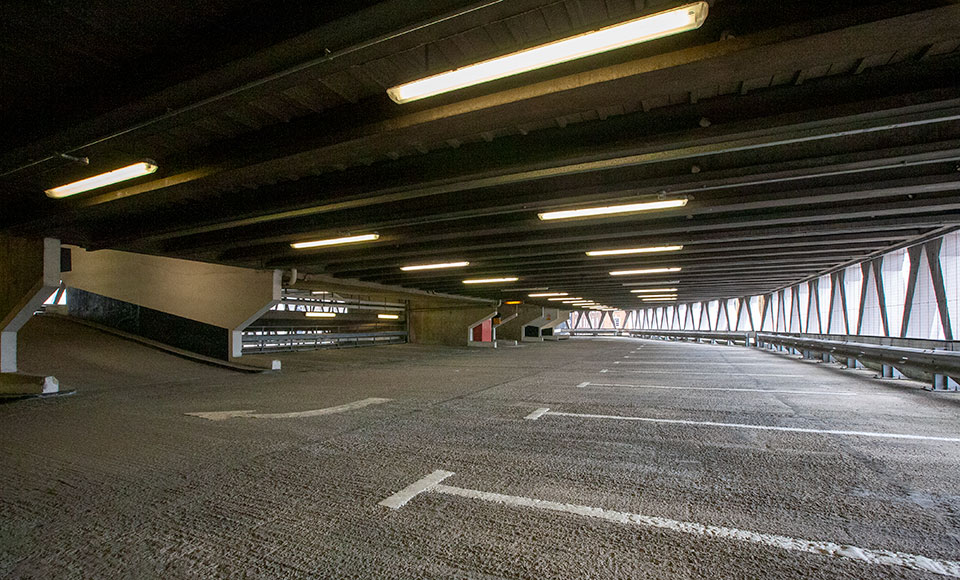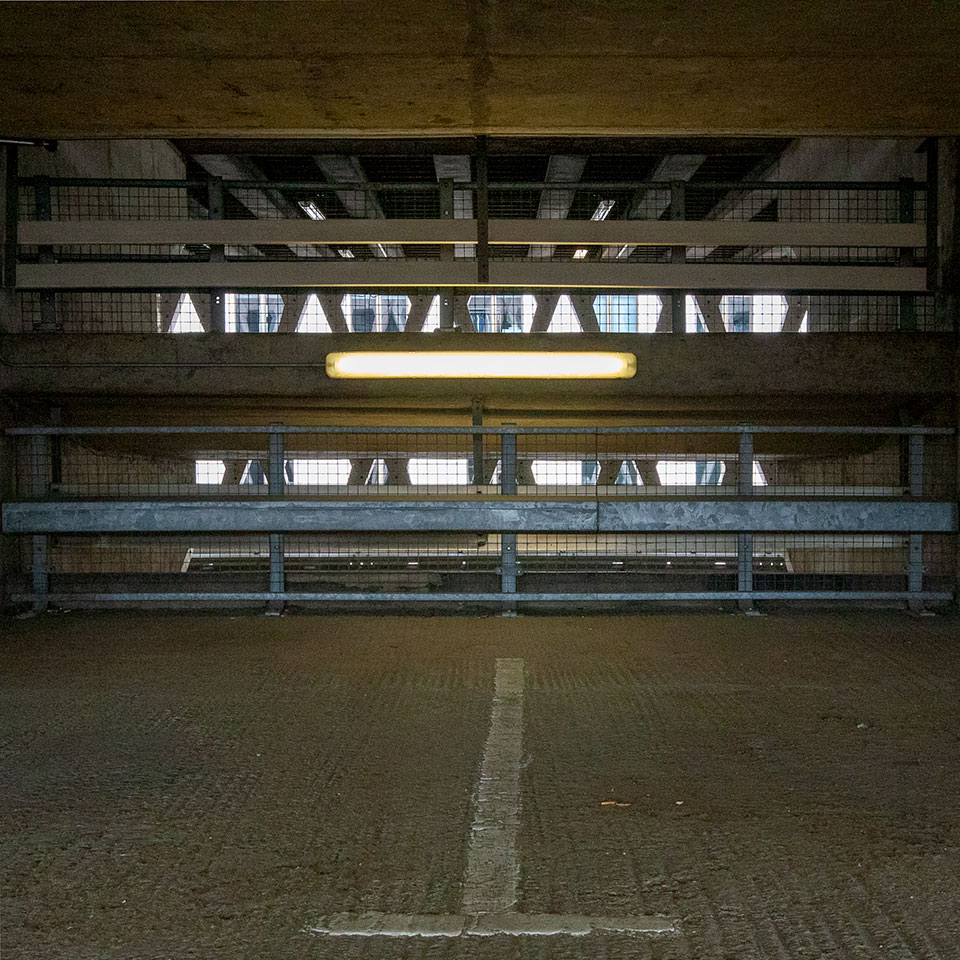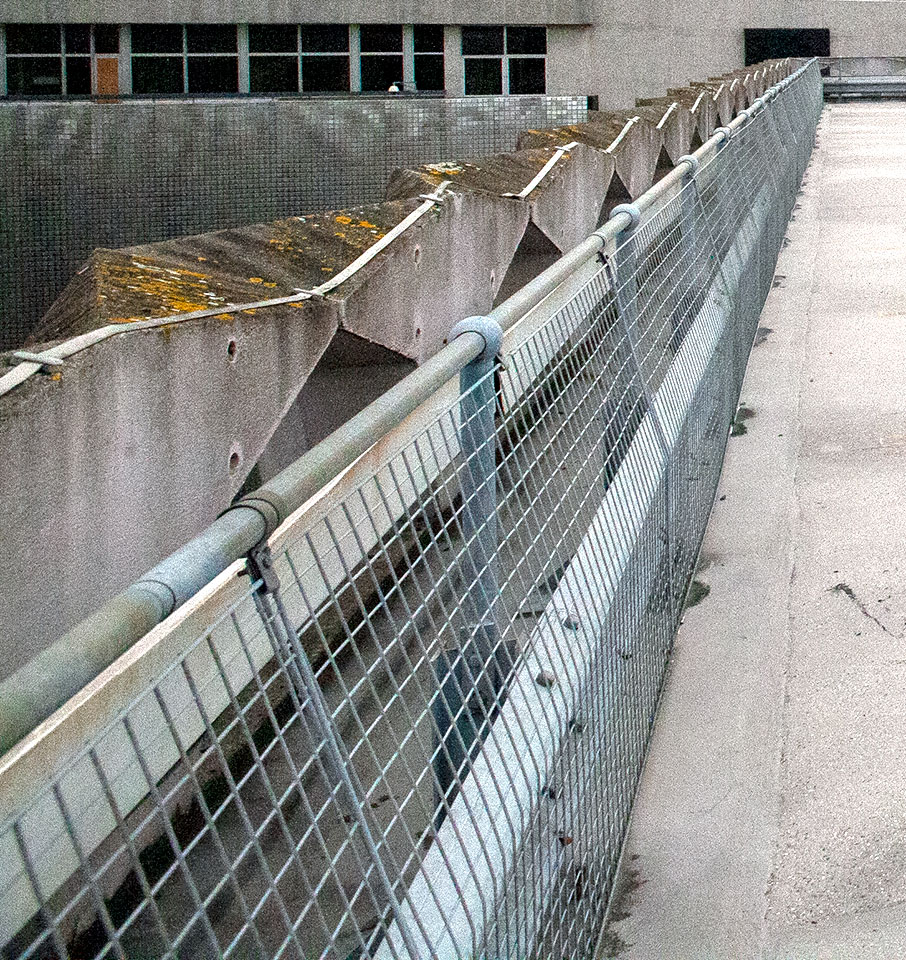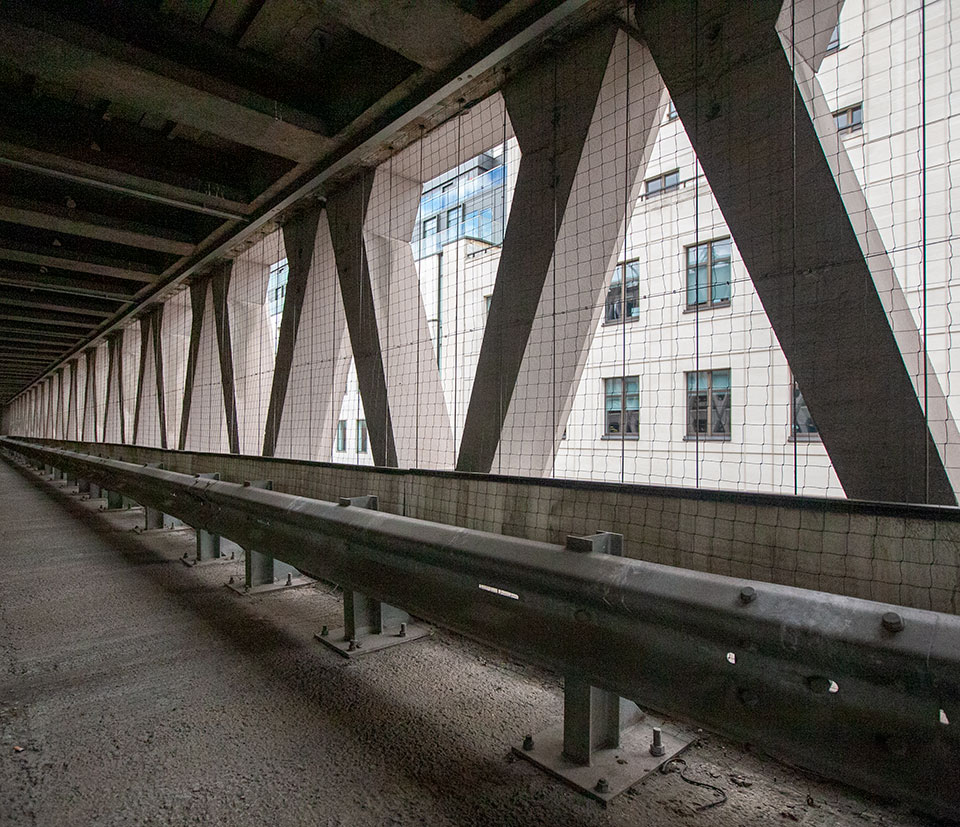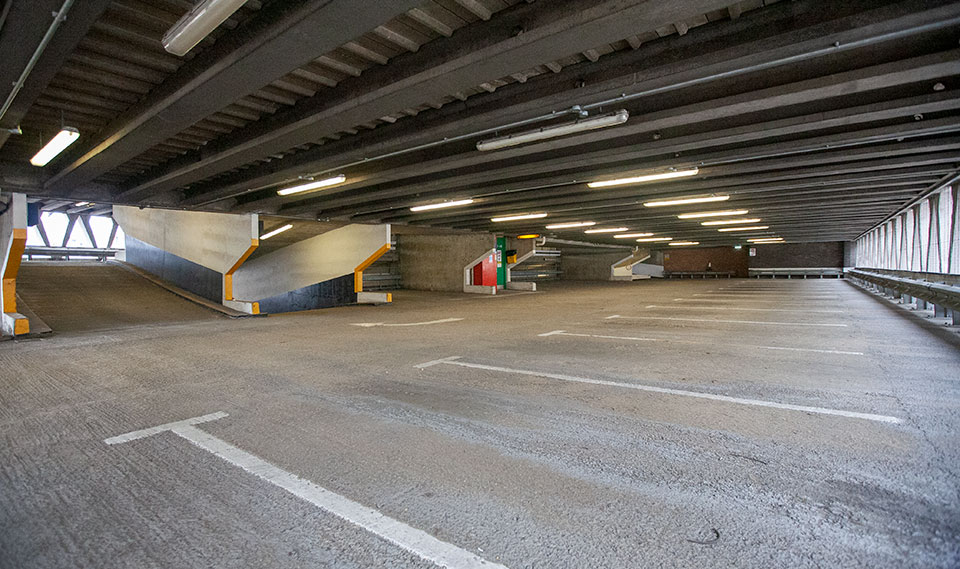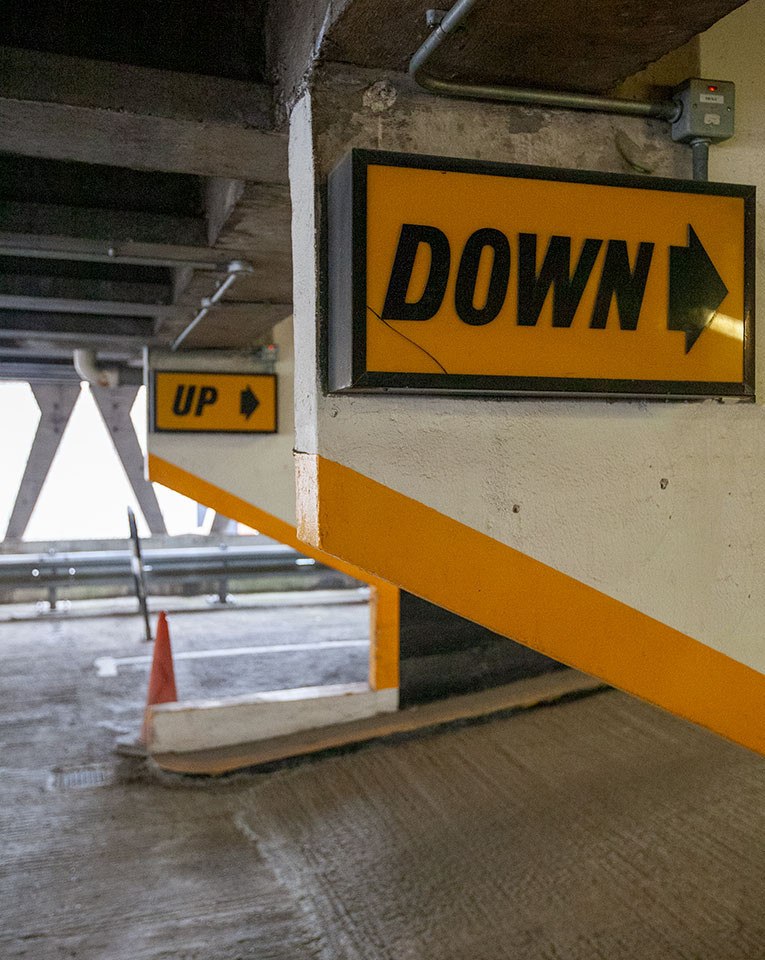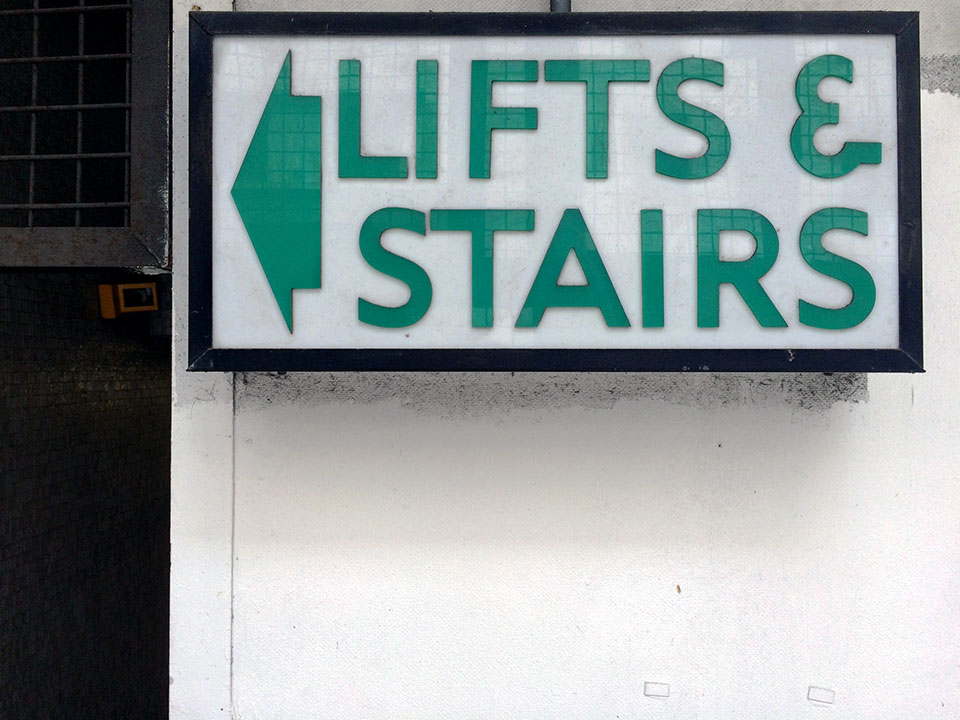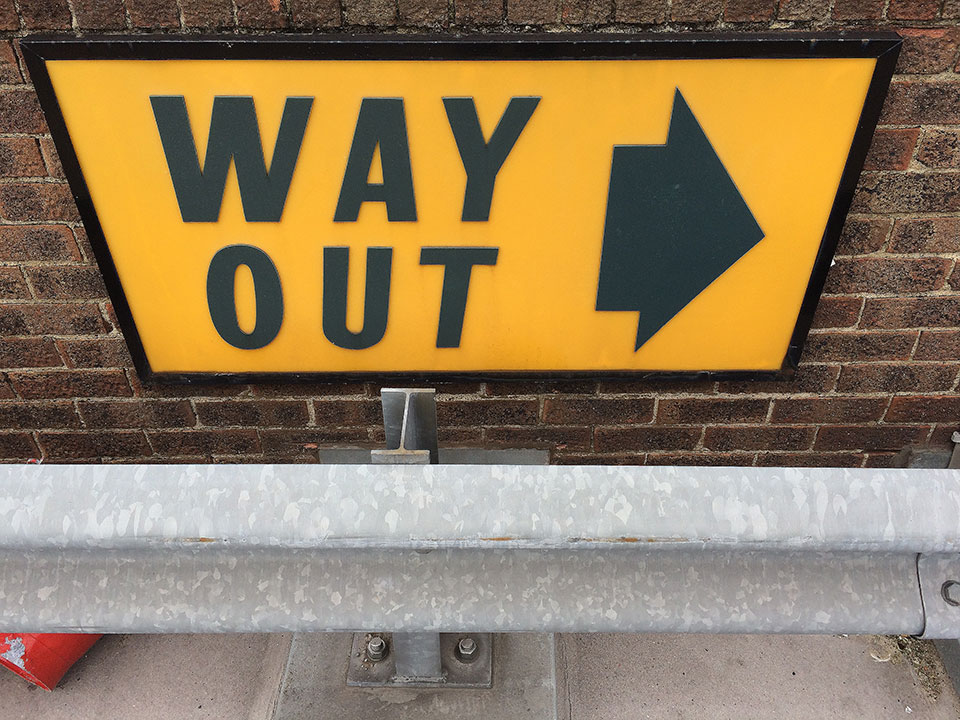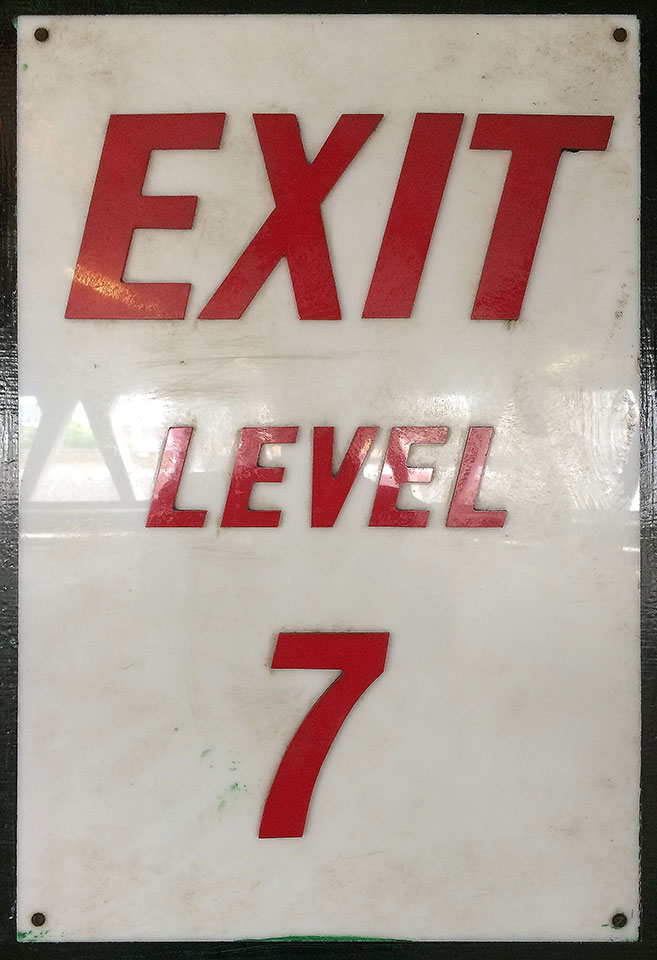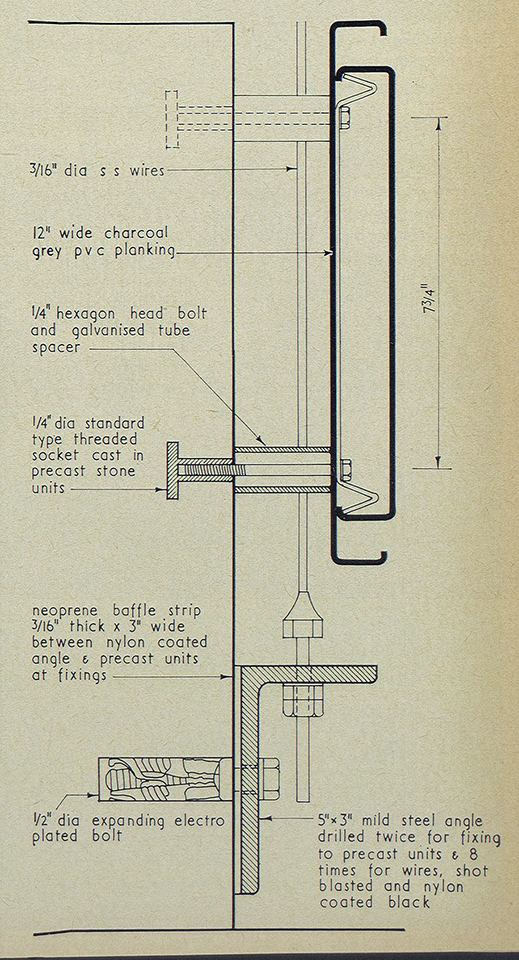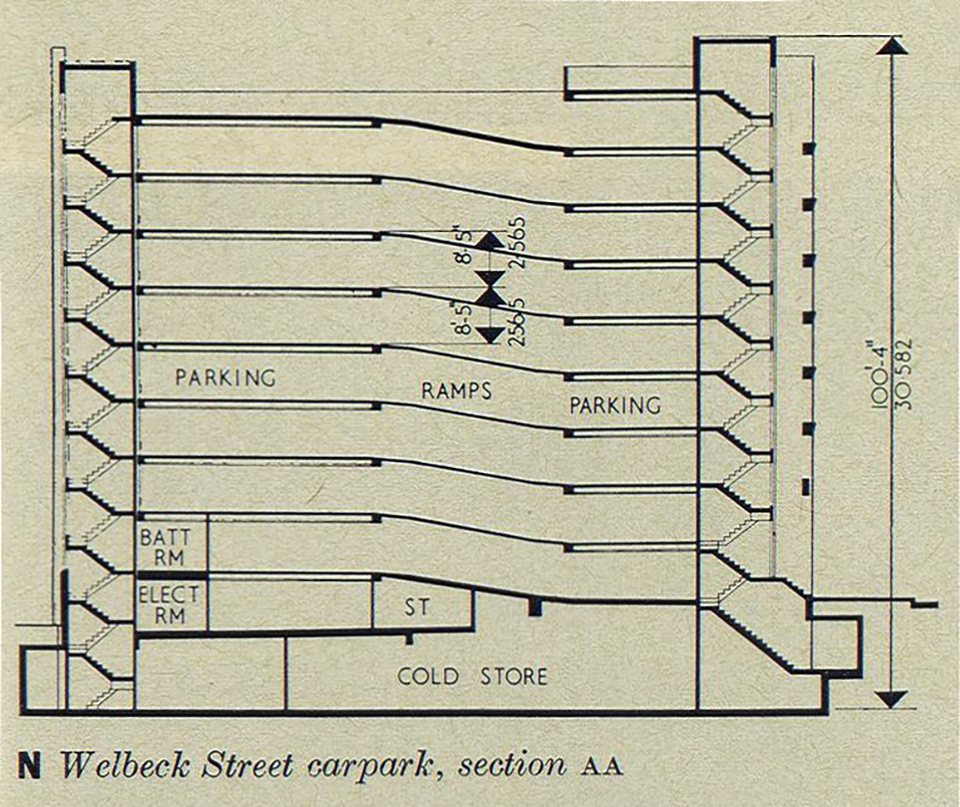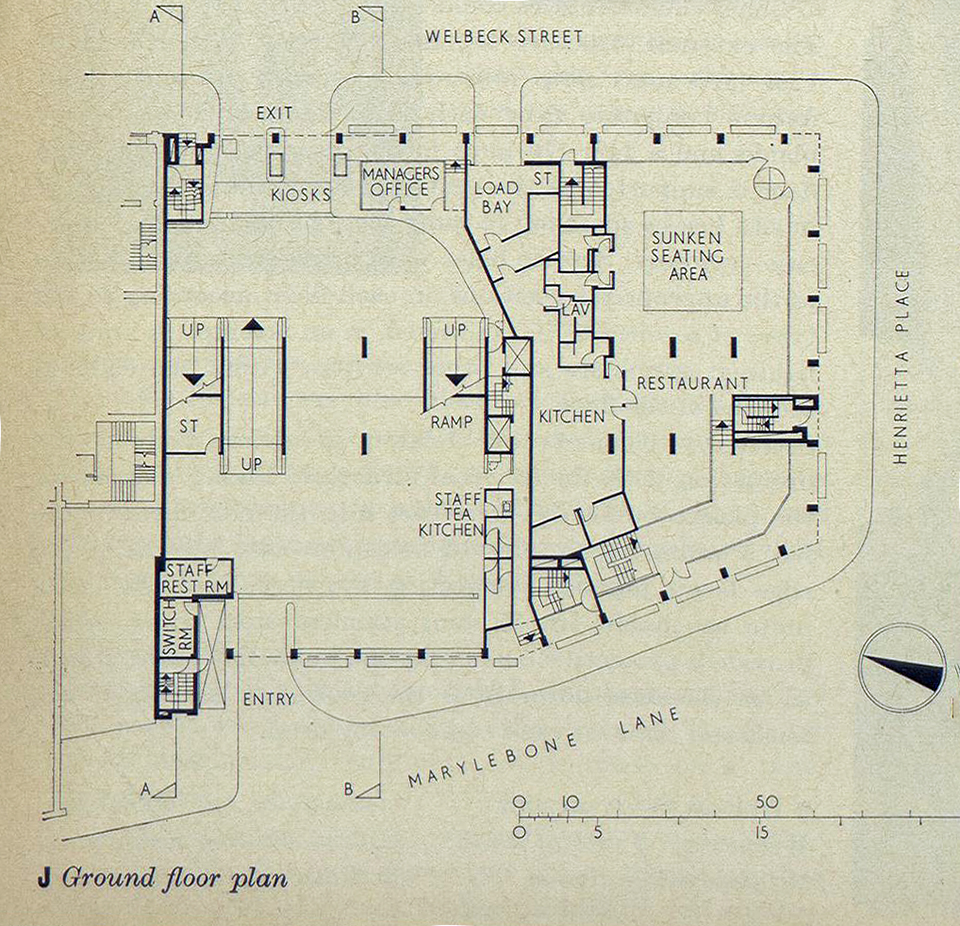Welbeck Street Car Park
1970
The fate of Welbeck Street Car Park highlights some of the peculiarities around the popular fascination with brutalism in the UK, as well as evidencing entrenched economically driven decision making around development. As brutalist buildings were demolished across the UK, the few remaining examples became increasingly prominent, particularly in social media circles. It is fair to say that for most of its existence Welbeck Street was a fairly anonymous functional building. It was subject to only one article in the architectural press around the time of its construction and only first observed as of any merit in Simon Henley’s 2007 book, The Architecture of Parking. It was not universally admired when completed, whilst the AJ heralded it as ‘pleasing’, a few weeks later, in a letter to the weekly publication, Donald Mill, a colleague of Denys Lasdun, wrote of the ‘second-hand Seifert treatment of its façade’ [1]. It was only as speculation over its future increased that its popularity grew, albeit Sam Jacobs nominated it for inclusion in a 2013 Design Museum show celebrating hidden architectural gems. In terms of its architectural qualities, it has clearly split opinion, both when new and when facing demolition. Blampied and Partners were not well known and remained that way after Welbeck Street was built. When it was published alongside two other London car parks (Young Street and Minories) the team of F.D. Kahn and R.R. Le Duc provided an ‘architect’s account’ that described some of their design process. The 400 space car park was a statutory undertaking required by Westminster Council to service Debenham’s department store on Oxford Street and their nearby offices. The structure is entirely precast, following a series of option studies by the architect. The V shaped structural façade members were developed by the design team from an initial Y shaped profile [2]. The modelling of the units on the outside face gives the impression that they are decoration, the articulated joints don’t appear to meet one another. From the inside the structure reads as a deep truss and its performance is clear. This is the product of a three dimensional design process where the modules were carved from polystyrene to develop their appearance. A full size mock up panel was exposed to the elements for a period prior to fabrication to observe its weathering. The original signage survived all the way until the building’s demolition in 2019 to make way for a luxury hotel. This was despite calls for its preservation from a number of groups, pleas to preserve some of the façade modules at the V&A and the obvious arguments about embodied carbon and building re-use.
[1] Architects’ Journal, 6 October 1971, p.742.
[2] https://www.architectsjournal.co.uk/news/opinion/simon-henley-va-should-save-this-unique-car-park-facade
